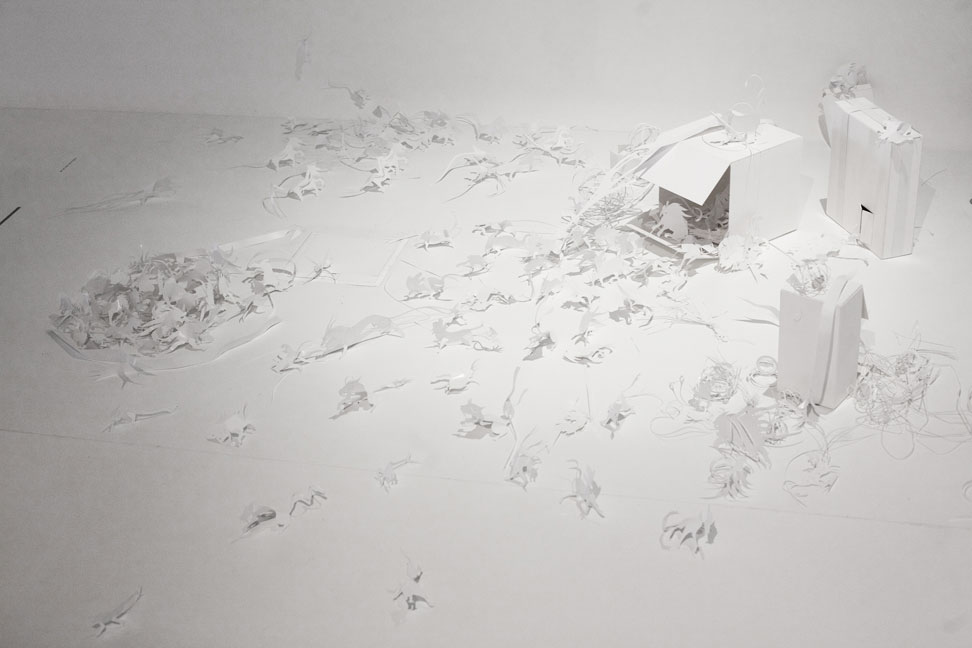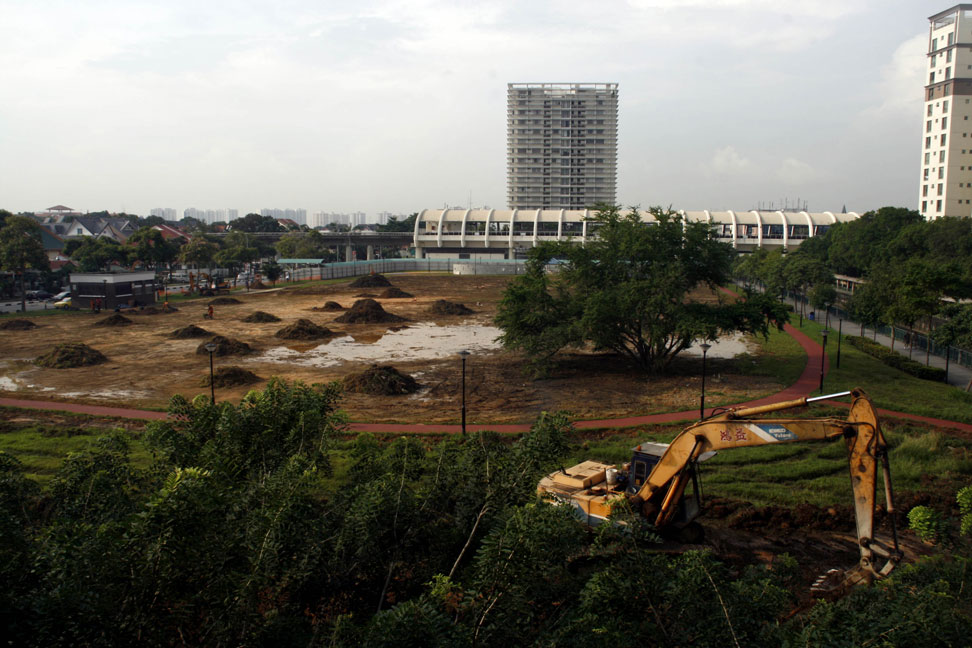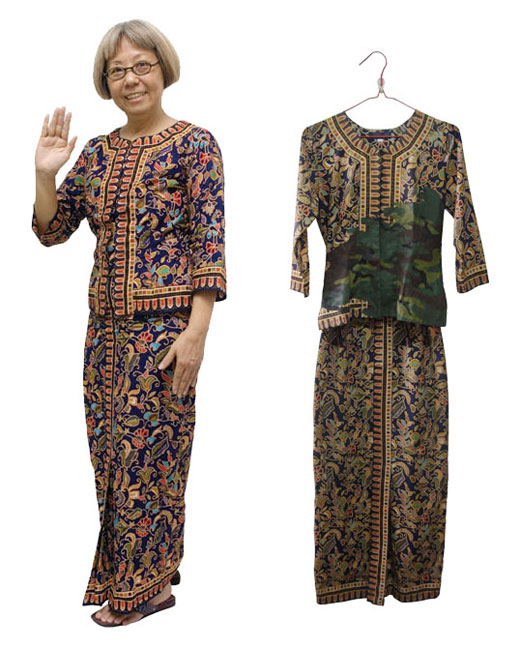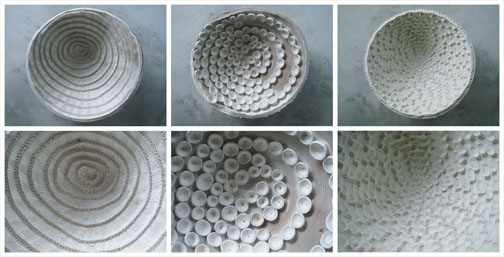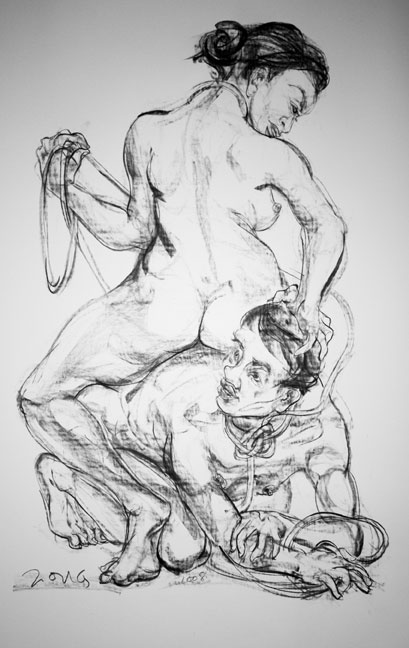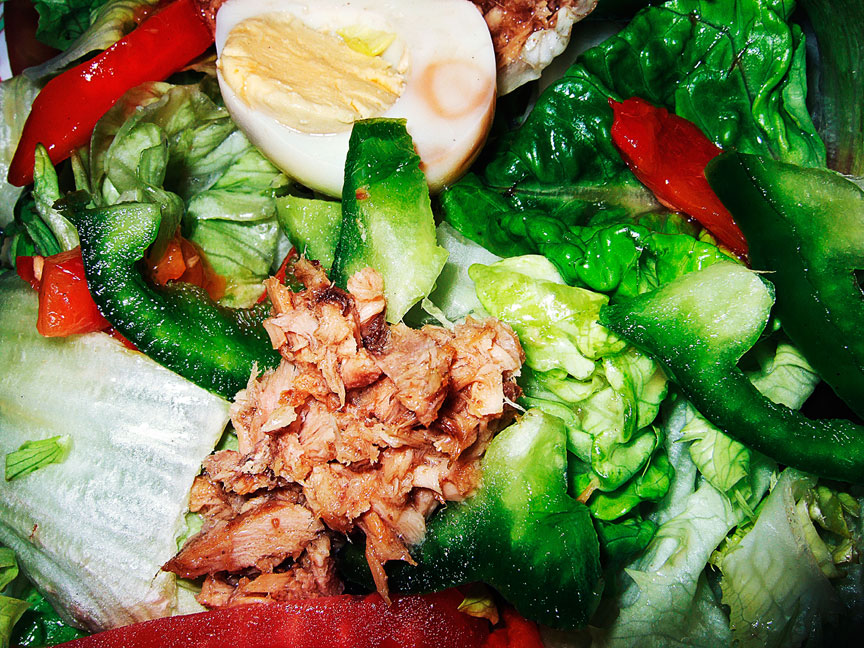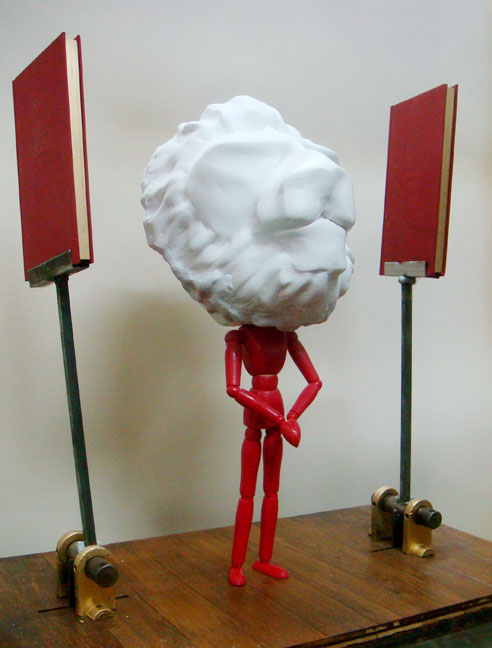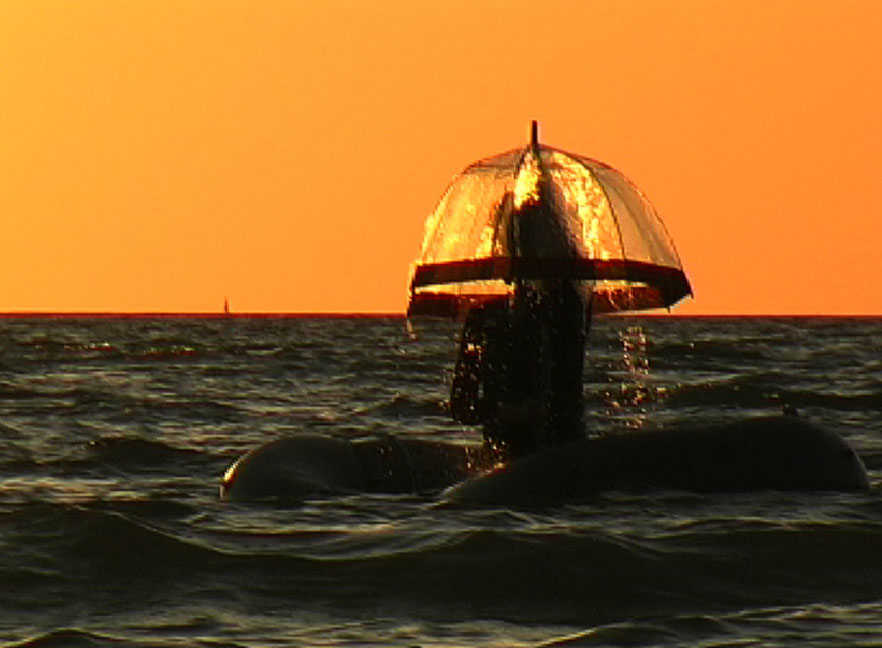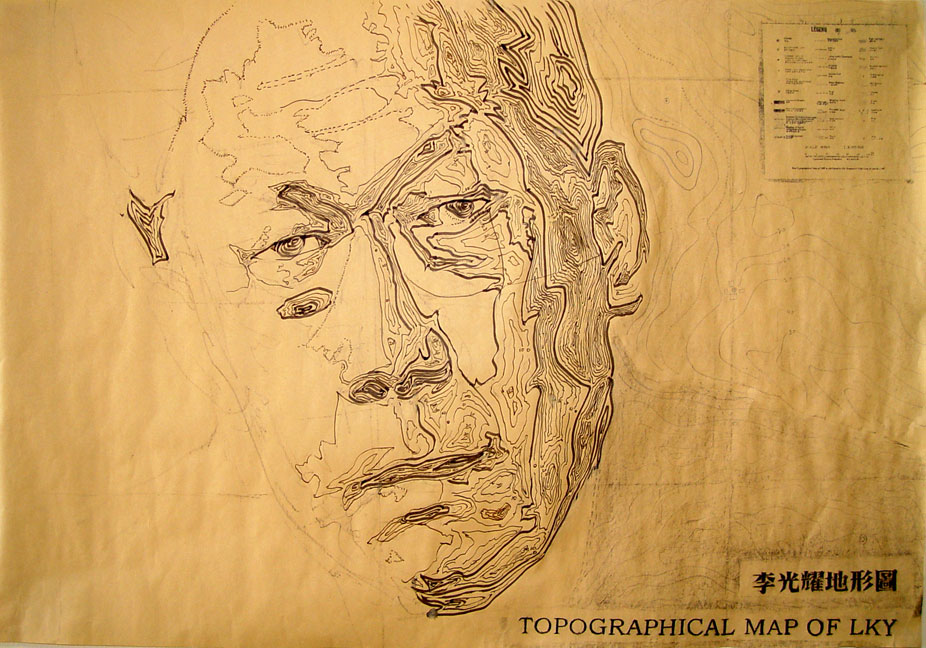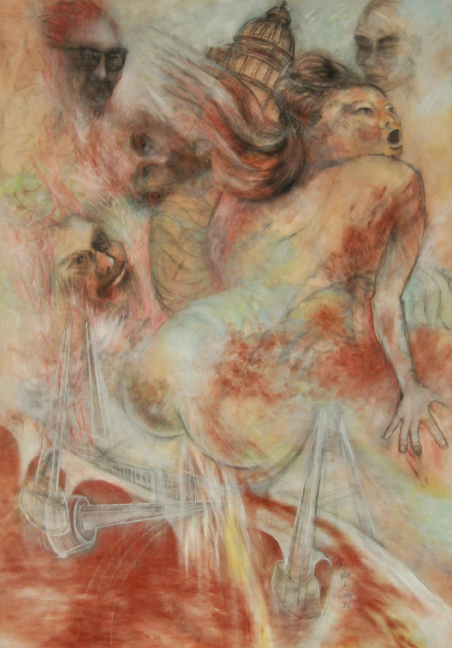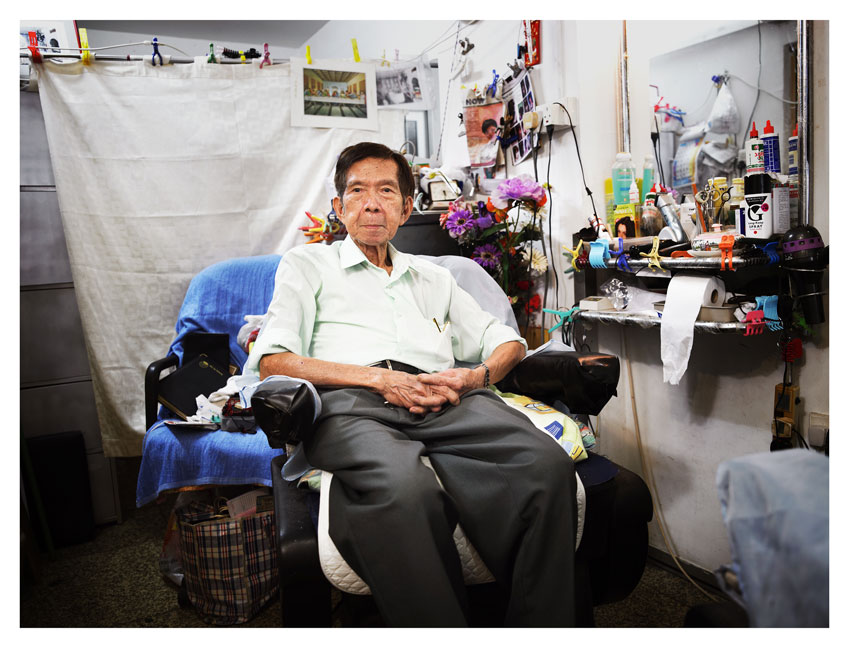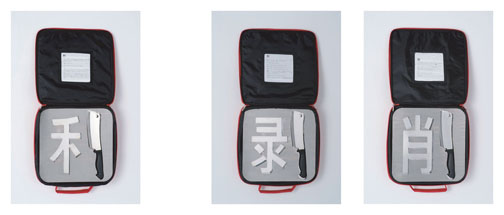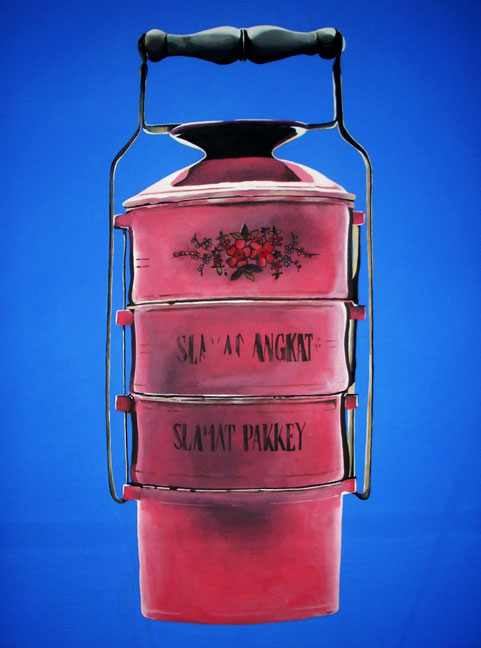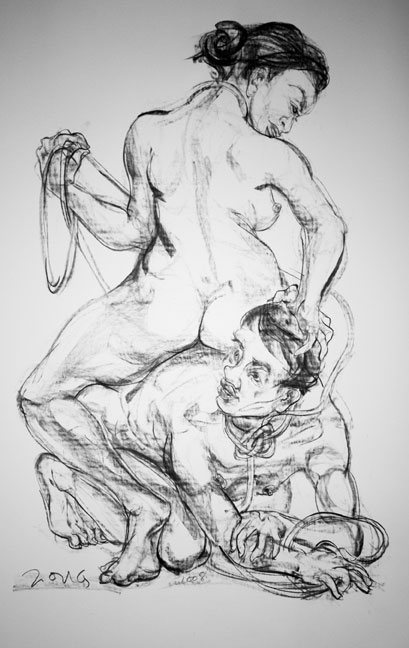Group Exhibition
The Air Conditioned Recession: A Singapore Survey
With Singapore facing its deepest economic recession, there is a growing sense amongst the people of this island republic that their government cannot always be expected to provide all the answers to their shared problems, that oftentimes, the answers lie within themselves. This also means a loosening of state strictures that have hitherto dominated social political debate within the republic. This loosening has also been hastened by the space that the internet allows.
The Air Conditioned Recession – A Singapore Survey, will attempt to address some of the underlying issues that remain under the surface by mining existing works by Singaporean artists created in the past few years.
The Air Conditioned Recession is a partner programme of SINGAPORE ART SHOW 09.
CURATOR’S NOTE
When I’m in Singapore, I stay in a HDB apartment in Tiong Baru – to be more exact on the 8th floor of a 36 storey block. My neighbours are predominantly lower middle class Chinese families. They are friendly if slightly puzzled by my intermittent presence.
Contrary to what people may think, its comfortable enough. But most of all, I enjoy going to the Tiong Baru market. Though it’s now become quite gentrified and is only half as comprehensive as it once was, the visit to the market is an integral part of my morning ritual whenever I’m in town.
On my short walk to the market, I pass through by other HDB blocks. The block next-door is more multiracial but it’s also much older and smaller. I’m not sure of the size but I reckon they’re no larger than 500 sq feet and some of the units appear to be housing more than six adults.
The block after that is much newer. It’s almost luxurious by comparison. I guess these HDBs are what Singaporeans call the ‘heartland’, the residents of which are ‘heartlanders’.
With high property prices (that still seem to be increasing in spite of the recession), many of the heartlanders could be considered book millionaires though you wouldn’t know it if you were to meet them at the market and on public transport – scrimping on their daily purchases and counting their pennies.
Contrary to conventional wisdom, the recession is not a great equaliser. The rich are less rich perhaps but the not so rich are much poorer. They have to work harder just to maintain their current status. Yet they seem happy enough with their lot, or so it seems.
How will we know for sure? Certainly, my local barber and laundry lady smile uncomplainingly; seemingly contented. But being the cynic that I am, I remain unconvinced.
So like any lazy tech savvy kay poh, I googled and you-tubed Singapore society and politics and lo and behold I started finding countless artworks, articles and videos documenting in equal measure, success and gratitude, disquiet and dissent within the island republic.
The premise of this exhibition, whose title I borrowed from Cherian George’s book of essays entitled “The Air-Conditioned Nation” is to pose the question about how Singaporean artists view their country as it transitions into a fully developed nation at a time of unprecedented global economic upheaval.
A particular imperative I set myself was to select artworks that were already in existence or in the process of being made. None of the works were created specifically for this exhibition. And as with any meaningful survey of Singapore art, I started with three senior artists whose art has always questioned and challenged conventional wisdom, namely Tang Dawu, Amanda Heng and Jimmy Ong.
But since this is a contemporary survey, I made a conscious decision to mine the internet for more examples of artists and artworks that question and challenge. So in finding many of the younger artists in this survey, my research tool was Google and You Tube. It is also on You Tube http://www.youtube.com/watch?v=VEQvM71BD64 that you can view and listen to a valedictorian speech by a fresh graduate filmmaker Loo Zihan where he reminds us that the role of the artist in society is, “to think, to question, and to challenge.”
Valentine Willie
Singapore
2 August 2009
THE AIR CONDITIONED RECESSION
A Singapore Survey
The Air Conditioned Recession: a Singapore Survey is an attempt to gauge the current mood of the city-state – admittedly through the medium of fine art. Forty-four years after their Separation from Malaysia and Independence and given the unprecedented economic squalls of the past 18 months, many have questioned the resolve and fortitude of Singaporeans, used as they are, to galloping growth rates and continuous prosperity.
There has also been a dramatic shift in mood from the all-out exuberance and booster-ism of 2007 when the prospect of the Integrated Resorts and other massive investments – in Sentosa Island and elsewhere loomed large. Since then Singapore has experienced a series of wrenching dislocations as global trade and finance has plunged in tandem with withering consumer confidence and banking sector collapses in the States and Europe.
To the outside world Singapore often appears to be the very apogee of modernity: a cutting-edge Asian urban centre – sleek, orderly and cool – so cool in fact that it seems to have lost the raw, rambunctiousness and earthiness that you’d expect from one of the globe’s great entrepôt. This port city par excellence is not a seething mass of sin and debauchery.
Unfortunately over the decades, foreign perceptions of the city-state have slowly come to dominate popular thinking so much so that even prominent Singaporeans themselves worry- and openly at that- about the ‘transactional’ way with which their countrymen view their homeland.
A good example of this at work can be seen in a recent speech by Deputy Prime Minister and Defence Minister, Teo Chee Hean when he said: “Anonymous, transactional bus rides are a part of our everyday lives. However, something valuable would be lost if the daily routine of ‘tap on, tap off’ turned out to be metaphors for the way we live and negotiate our relationship with the past, present and future: no emotional attachment to friends or neighbours, home or country.”
There’s a perception then, that Singaporeans are cold and unfeeling and that they lack a commitment to anything but themselves. It’s as if they’ve applied the core principle of consumerism – the infallibility and supremacy of the market to their approach to everyday life and indeed citizenship as well as nationhood.
As this argument is expanded, it tends to portray Singaporeans as automatons, mere ‘inputs’ into the ever-onward process of globalisation as evidenced by the dockyards and gantry cranes alongside this gallery. The vision is bleak and Orwellian with individuals reduced to ciphers and cogs – lacking in verve, passion and indeed at times, even basic humanity.
However, this stark and gloomy interpretation of Singapore is firmly refuted by the works in this exhibition. These works are unfailingly passionate, intensely felt and rich in emotion and sensitivity. They also reflect a core of warm humanism that survives despite the clinical surroundings and all-too ‘interventionist’ state machinery. Indeed, there’s always a sense of the state – shall we say as a ‘presence’ – looming outside, hovering beyond the borders of each of the artworks.
Perhaps the most tender and indeed most moving depiction of ordinary Singaporeans are Alecia Neo’s portraits from her Home Visits Series. Returning to her predominantly working class childhood neighbourhood of Queensway on the west coast as an adult, Alecia has been able to take a series of photographs that reveal a high level of trust (especially in her both as a friend and neighbour) as well as a warm sense of community that exists there.
Whilst the homes occupied by her subjects are small and at times, even claustrophobic, the accumulated clutter reflects the personality of the subjects, providing us with an intimate perspective into each subject’s world and none more so than the Blk152 Barber and Landlord or Ah Gu with his pets.
Here, in their homes and workplaces, these Singaporeans have asserted their respective identities– they have declared themselves, as it were. Their worlds aren’t sleek and they’re certainly not neat. This is not the artificial Singapore of Orchard Road, of ION and Vivo City. This is the real deal.
Alecia also places her subjects in a socio-political context. By framing her work within the confines of the home and/or the workplace she tells us about their respective milieus. In certain cases she’s even managed to enter her sitters’ bedrooms and in Shaka and Daughter, Purple Room we have a Malay Muslim lady with her young daughter, a bike leaning against the wall behind.
The sense of limited space and the intimacy combines to provide us with a delicate image that updates and domesticates the portrait-painting tradition, reducing it in scale until the figures are presented within a tightly packed, densely furnished HDB apartment.
We are privileged on-lookers, (we even manage to penetrate the ultimate – a Muslim woman’s boudoir) permitted access into the most private of moments, when the deracinating air-conditioning has been turned off and the windows are thrown open.
Indeed as Cherian George the author and academic explains: “The air-conditioner is the quintessential Singaporean convenience, providing comfort but at the cost of national insularity and regulation. A Singaporean art exhibition on this theme is a welcome contradiction, for most art – certainly art of this sort – is not what this practical-minded, bottom-line-driven nation is usually associated with. These artists say, open the windows and let the fresh air blow in.”
Having coined the phrase ‘the air conditioned nation’ for his book published in 2000, Cherian’s words help sweep away the fusty institutionalism and bureaucratic nitpicking that seems to impede the flow of life in so much of Singapore.
Perhaps the most powerful weapon against the self-importance of officialdom is humour. Amanda Heng is in the vanguard of such wry and socially astute commentary.
With her trademark wit and self-deprecating style, she explores the contradictions within the Singaporean ethos. Her middle aged and slightly frumpy Singapore Girl is a far cry from the neatly coiffured, model-like stewardesses of male daydreams. Nonetheless, as Singapore ages and becomes an increasingly older society, the reality of more mature ‘Singapore girls’ striding through airports might not generate quite so much excitement amongst the travelling classes.
The wry and satirical tone is also picked up by Ghazi Alqudcy and Ezzam Rahman in their Forgotten Merlion video as Singaporean after Singaporean (all loyal citizens, no doubt) stumble and then fall painfully silent as they’re called upon to sing their national anthem – Majulah Singapura, the lyrics for which are in Malay.
With Safaruddin Abdul Hamid or Dyn, the humble Tiffin carrier is iconized and celebrated. With Dyn, acrylic on canvas becomes so life-like and so alluring – blurring the lines between photography and documentation, between painting and the imagination.
Jing Quek’s cheeky videos explore the twin fascination with North Asian popular culture – witness the extraordinary success of Japanese anime cartoons and South Korean soap operas in the city-state – as well as the faux bravado of young men in The Kamikaze Maggi Warrior. In this case we have a player treating his dried stacks of instant noodles with all the seriousness and respect of a Japanese samurai, opening the packets of MSG flavouring as if they were the most exquisite teas and delicacies.
The result is a deliriously silly take on the warrior class and those aspiring to such masculinity. In Singapore, at least and notwithstanding the ever-present National Service, life is generally lived on a far more humdrum level where the flavour of one’s instant mee is more crucial and telling than anything else.
From laughter we switch to tears and with Lynn Lu’s work we enter a world that is steeped in pathos and pain. The terrain is intensely personal and the suffering and loss is keenly felt. In her video, Inadequate Reality Adaption we watch as the artist slowly sinks as the tides rise, a metaphor for lost love and the almost exquisite pain of thwarted amours.
From the rich texture of emotions and the wry and sardonic worldviews of some artists we move to those who observe the public domain – ranging from those who seem to be possessed of a sad, resignation and others who are more forthright and activist in their observations.
Jason Wee with his neon-light installation Christ is Always Right approaches the recent AWARE controversy and the perceived split between moral, religious activists and secularists with a tongue-in-cheek tone. Whilst the lights emblazon the infallibility of the Son of God, there’s no doubt the artist is signalling something entirely different.
And with Michael Lee’s extremely beautiful paper sculptures we are presented with ruminations on transience and impermanence in a manner that is both deft and compelling.
Michael is a mastery of his materials. His work is breath-taking, as he turns the whole books and sheaths of paper into items of weightlessness that still possess meaning and beauty.
With Junaidi Wa’ee the Merlion is drafted as a playful symbol. Dubbed the Lalang Series, the work appears to suggest that the proud symbol of nationhood has become a pliable beast, subverted and malleable to the demands of others.
And finally we conclude with Tan Seow Wei’s finely wrought and extremely detailed drawings and installations. Her work is deeply-rooted in the Singaporean experience and she has transmuted the specific into a retelling of the nation’s story.
Her Petri Dish Series is painstaking and chilling, with figures – isolated and under observation, each confined to a small dish. The meaning is clear. The artist leaves us in no doubt of the hovering presence watching over her shoulder, experimenting and tinkering with human existence.
Finally we come to the Topographical Map of LKY in which an island, a city and a state has been reduced to one man – albeit a giant of a man. Is he the be-all and end-all of this country? Are we merely part of the contours of his face? The artist’s position isn’t entirely clear.
However in equating the island and the man so forcefully and intertwining the two, we are left to wonder whether his creation- if indeed Singapore with its laughter, its tears and its humanity can be said to be his creature- will outlast the man himself? The individuals – richly-hued, packed with personality and humour are clearly more than ready to step out of the Petri dishes. As Cherian says, turn off the air conditioning and open the windows. The air may be hot and humid but it’s real and it’s throbbing with life.
Karim Raslan
Kuala Lumpur
2 August 2009

